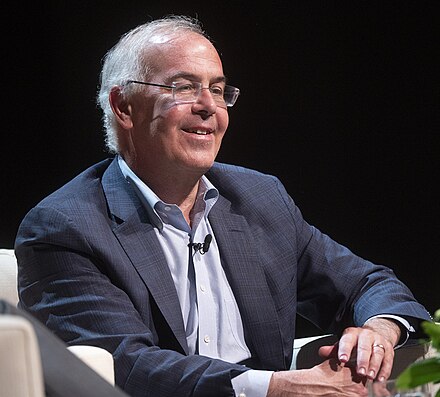
David-Brooks-2022 %28cropped%29.
(Image by Wikipedia (commons.wikimedia.org), Author: Jay Godwin) Details Source DMCA
Duluth, Minnesota (OpEdNews) November 27, 2023: The American journalist and op-ed columnist for the New York Times David Brooks (born in 1961 in Toronto; B. A. University of Chicago, 1983) once mentioned my favorite scholar the American Jesuit Walter J. Ong's most widely read, and most widely translated, 1982 book Orality and Literacy: The Technologizing of the Word (Methuen) in a column of his titled "When Trolls and Crybullies Rule the Earth: How technology reshapes consciousness" (dated May 30, 2019) in the New York Times:
In it, David Brooks says, "In 1982 the scholar Walter Ong described the way, centuries ago, a shift from an oral to a printed culture transformed human consciousness. Once storytelling was a shared experience, with emphasis on proverb, parable and myth. With the onset of the printing press, it became a more private experience, the content of that storytelling more realistic and linear."
But David Brooks does not give the title of Ong's 1982 book in his 2019 discussion of it.
Now, Ong's books were never reviewed in the daily New York Times or in the Sunday New York Times Book Review. But when Ong died in 2003, the New York Times published an obituary by Wolfgang Saxon titled "Walter J. Ong, 90, Jesuit, Teacher and Scholar of Language" (dated August 25, 2003):
I survey Ong's life and eleven of his books and selected articles in my introductory-level book Walter Ong's Contributions to Cultural Studies: The Phenomenology of the Word and I-Thou Communication, 2nd ed. (Hampton Press, 2015; 1st ed., 2000).
In it, because Ong never tired of touting I-thou communication, I draw on the self-help book The Art of Intimacy (Prentice-Hall, 1987) by the father-son team of psychiatrists Thomas Patrick Malone, Ph.D., M.D. (1919-2000) and Patrick Thomas Malone, M.D. (1944-2016) of Atlanta (at the time) to help explicate the psychodynamics of I-thou communication (pp. 5, 8, 32, 87, 93, 103, 118, 119, 120, 186, 191, 207n.13, and 224n.10).
In addition, I discuss Erik H. Erikson's account of the eight stages of personal psychological development in my ambitious essay "Secondary Orality and Consciousness Today" in the book Media, Consciousness, and Culture: Explorations of Walter Ong's Thought, edited by Bruce E. Gronbeck, Thomas J. Farrell, and Paul A. Soukup (Sage Publications, 1991, pp. 194-209).
Now, I briefly profile myself as an author in my recent OEN article "Thomas J. Farrell on Thomas J. Farrell" (dated November 17, 2023):
For a profile of David Brooks, see the Wikipedia entry about him.
Now, just as I categorized the Malones' 1987 book as a self-help book, I would also categorize David Brooks' accessible new 2023 book How to Know a Person: The Art of Seeing Others Deeply and Being Deeply Seen (Random House - his fourth book with Random House) as a self-help book -- inasmuch as it is designed to prompt self-reflection and be instructive. For understandable reasons, it also contains a certain amount of autobiographical information about David Brooks' life - but not so much that it is intrusive or distracting.
(Note: You can view every article as one long page if you sign up as an Advocate Member, or higher).




